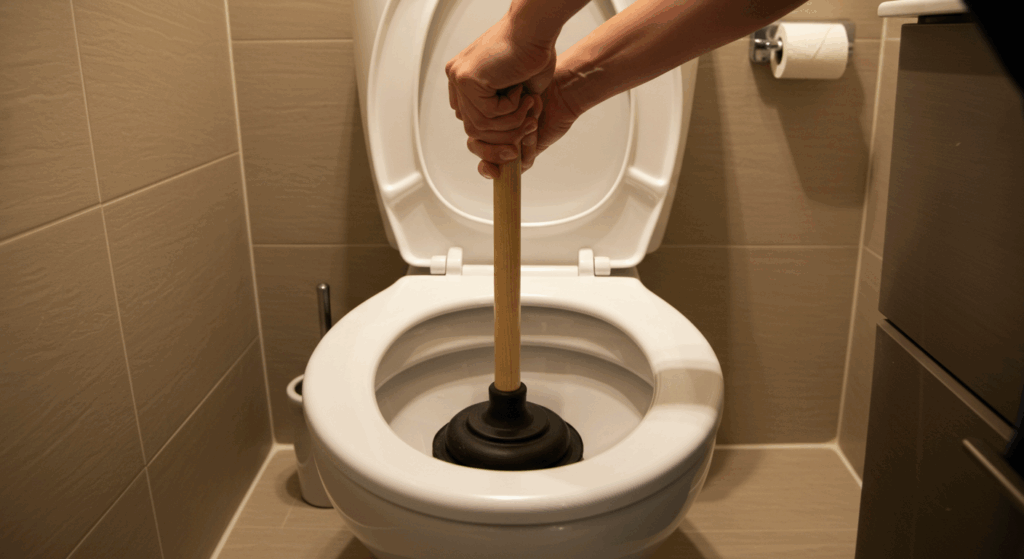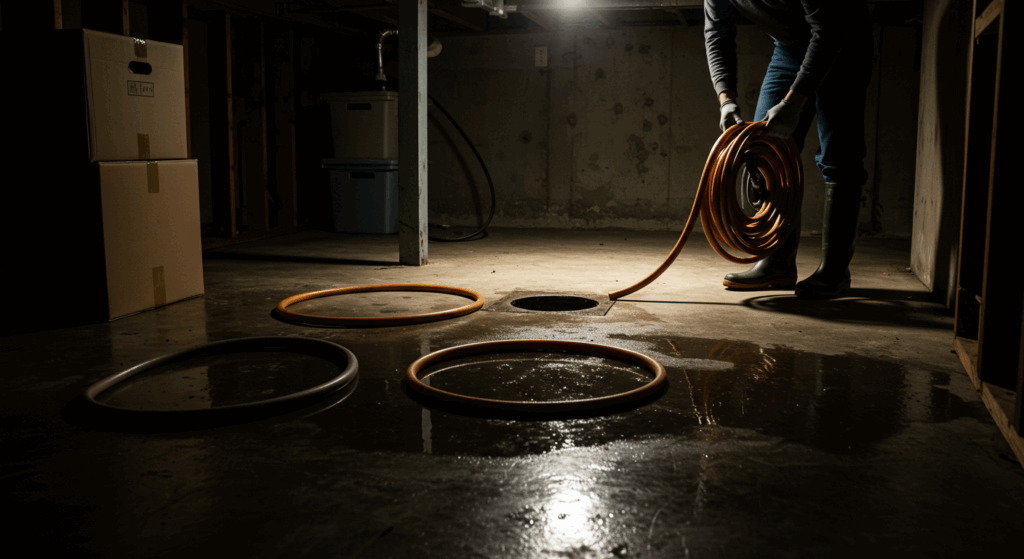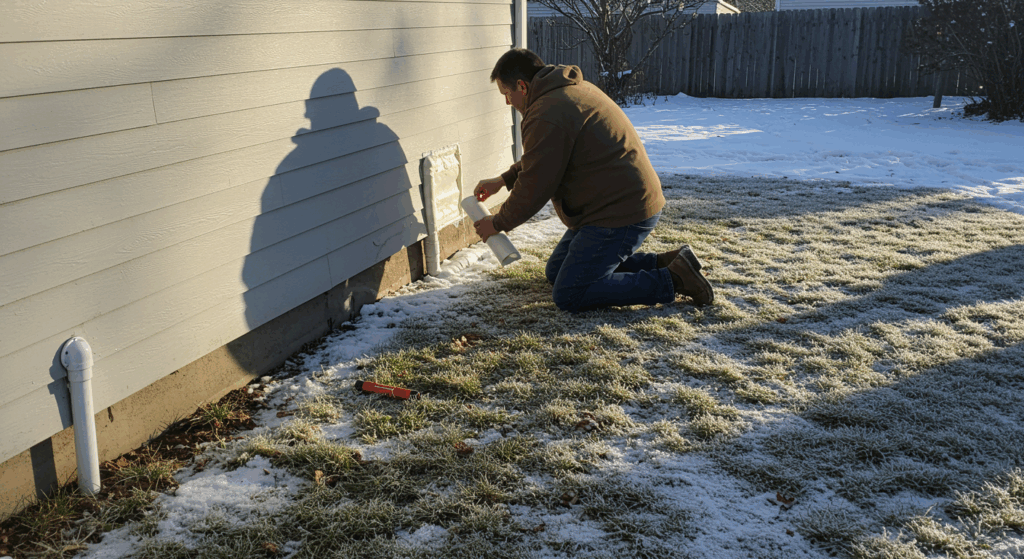Dealing with a toilet backup is one of the most frustrating and unsanitary plumbing emergencies homeowners face. Whether it’s an overflowing bowl or water refusing to drain, these situations demand immediate attention and the right approach. Understanding why toilets back up and how to prevent these issues can save you from costly repairs and potential health hazards.
Most toilet backups happen due to drain line clogs, too much toilet paper, or flushing the wrong items. In some cases, the issue runs deeper, like tree roots in your sewer line or septic system troubles. Fortunately, many backups can be handled quickly, and with help from AAA Organized Plumbing and the right maintenance habits, you can prevent most problems from returning.
In this comprehensive guide, we’ll explore the most effective methods for stopping toilet backups, from immediate solutions you can implement yourself to long-term prevention strategies. You’ll learn to identify warning signs, understand when to call professionals, and discover maintenance practices that keep your toilet functioning smoothly year-round.
Understanding the root causes of toilet backups helps you address the issue more effectively and prevent future occurrences. The most frequent culprit is excessive toilet paper usage, which creates dense clogs that prevent proper drainage. Many homeowners underestimate how quickly multiple layers of toilet paper can accumulate and form stubborn blockages.
Flushing inappropriate items ranks as another leading cause of toilet backups. Items like feminine hygiene products, cotton swabs, dental floss, and even so-called “flushable” wipes can create serious blockages. These products don’t break down like toilet paper and often catch on pipe joints or existing debris, creating larger obstructions over time.
Hard water deposits and mineral buildup gradually reduce pipe diameter, making blockages more likely. This process happens slowly over months or years, but eventually creates conditions where even normal usage can trigger backups. Additionally, older homes with clay or cast iron pipes face an increased risk due to pipe deterioration and root intrusion.
Tree roots seeking moisture often infiltrate sewer lines through small cracks or joints, creating partial blockages that worsen over time. This issue is particularly common in properties with mature landscaping, where established root systems extend far beyond the visible tree canopy.

When facing an active toilet backup, your priority is stopping the water flow to prevent overflow and potential flooding. Locate the water shut-off valve behind the toilet and turn it clockwise to stop additional water from entering the bowl. If you cannot find or operate this valve, remove the toilet tank lid and lift the flapper to stop water flow manually.
Once you’ve controlled the water source, assess the severity of the backup. If water levels are high but not overflowing, wait for some drainage before attempting any clearing methods. Never flush again during an active backup, as this will only worsen the situation and potentially cause overflow.
The plunger remains your most effective first-line tool for clearing toilet backups. Use a toilet plunger specifically designed with a flange extension, which creates better suction than standard cup plungers. Position the plunger completely over the drain opening and use firm, consistent pressure with both downward and upward motions.
The pulling action often proves more effective than pushing for dislodging stubborn clogs. If plunging doesn’t resolve the issue within 10-15 attempts, avoid continuing as you may compact the blockage further. At this point, consider using a toilet auger, also called a closet auger, which can reach deeper into the drain line than a plunger.
Toilet augers provide superior reach and effectiveness compared to household plungers, extending up to six feet into the drain line. These specialized tools feature a protective rubber sleeve that prevents scratching the toilet bowl’s porcelain surface. Insert the auger carefully, crank the handle clockwise while applying gentle pressure, and work the cable through the blockage.
When using an auger, patience yields better results than force. Allow the tool’s design to do the work rather than applying excessive pressure, which could damage your toilet or push the blockage deeper into the system. If you encounter significant resistance, try working the auger back and forth to break up the obstruction gradually.
For persistent backups that don’t respond to plunging or augering, the issue may extend beyond your toilet into the main drain line. Signs of deeper problems include multiple fixtures backing up simultaneously, gurgling sounds from other drains, or sewage odors throughout your home. These symptoms indicate the need for professional intervention and more advanced equipment.
Professional plumbers utilize high-powered drain snakes, hydro-jetting equipment, and video inspection cameras to diagnose and resolve complex backup issues. These tools can address problems that household methods cannot reach, including root intrusions and collapsed pipe sections that require professional attention from AAA Organized Plumbing.
Effective toilet backup prevention starts with educating everyone in your household about proper flushing practices. Create clear guidelines about what can and cannot be flushed, emphasizing that toilets are designed exclusively for human waste and toilet paper. Post reminders if necessary, particularly in guest bathrooms where visitors might not know your preferences.
Monitor toilet paper usage patterns and consider switching to septic-safe or rapid-dissolving varieties if your household tends to use large amounts. These products break down more quickly and reduce the likelihood of accumulation in your drain lines. Additionally, teach family members to flush multiple times during heavy usage rather than allowing large amounts to accumulate.
Regular maintenance cleaning prevents mineral buildup and keeps your toilet functioning optimally. Clean the toilet bowl weekly with appropriate cleaners, and periodically check the tank components for proper operation. Ensure the chain connecting the flapper has appropriate tension and that the flapper seals completely when closed.
Consider professional drain cleaning annually, especially if you live in an older home or have experienced previous backup issues. This proactive approach identifies potential problems before they become emergencies and extends your plumbing system’s lifespan.
Here are essential prevention practices every homeowner should implement:

Recognizing when toilet backup issues exceed DIY capabilities prevents additional damage and costly repairs. If your initial attempts with plunging and augering don’t resolve the backup within 30 minutes, professional intervention becomes necessary. Continuing amateur efforts beyond this point often worsens the situation.
Multiple fixture backups indicate problems in your main sewer line rather than individual toilet issues. When kitchen sinks, bathroom drains, or other toilets experience simultaneous problems, the blockage likely exists in your home’s primary drainage system. These situations require professional equipment and expertise to resolve safely and effectively.
Sewage odors, water backing up into other fixtures, or visible sewage in your basement or crawl space constitute plumbing emergencies requiring immediate professional attention. These symptoms suggest serious system failures that pose health risks and potential property damage if not addressed promptly.
Recurring backup problems, even when temporarily resolved, indicate underlying issues that need professional diagnosis. Chronic problems often stem from pipe damage, improper installation, or system design flaws that only trained professionals can identify and correct permanently.
Establishing a comprehensive maintenance routine significantly reduces toilet backup frequency and extends your plumbing system’s lifespan. Schedule professional inspections every two years, or annually if your home has older plumbing or you’ve experienced previous issues. These inspections identify developing problems before they cause emergencies.
Consider upgrading to low-flow toilets if your current fixtures are over 15 years old. Modern toilets use advanced flushing technology that moves waste more effectively while using less water. This upgrade often pays for itself through reduced water bills and fewer maintenance issues over time.
Address landscaping concerns that might affect your sewer lines, particularly large trees planted near your home’s drainage system. While you don’t need to remove established trees, understanding their root patterns helps you monitor for potential infiltration issues. Professional root treatment options exist for properties with known root intrusion concerns.
For homes with septic systems, understanding proper maintenance becomes even more critical. Regular septic pumping, enzyme treatments, and awareness of how household chemicals affect bacterial balance all contribute to preventing toilet backups. Just as commercial plumbing maintenance matters for businesses, residential systems require consistent attention for optimal performance.
Water quality improvements through softening systems or filtration can reduce mineral buildup that contributes to blockages over time. While these systems represent significant investments, they provide benefits beyond backup prevention, including extended appliance life and improved water taste.

The winter months present unique challenges for preventing and resolving toilet backups. Cold temperatures can affect plumbing performance, particularly in homes with inadequate insulation around drain lines. Understanding how to unfreeze water pipes without damage becomes essential knowledge for homeowners in colder climates.
Holiday seasons often increase toilet usage due to house guests, creating a higher risk of backups during times when professional help may be less available. Prepare for these periods by ensuring you have proper tools available and educating guests about your home’s plumbing limitations.
Homes with septic systems face additional considerations, as backup problems might indicate issues with the leach field system rather than simple blockages. Understanding these components helps homeowners communicate more effectively with service professionals and make informed decisions about repairs.
Here’s a seasonal maintenance checklist to prevent backup issues:
Stop using the toilet immediately and turn off the water supply valve located behind the toilet base. Remove the toilet tank lid and lift the flapper to prevent additional water from entering the bowl if the shut-off valve isn’t working.
Never flush again until the backup is completely resolved, as this will only worsen the situation and potentially cause overflow that damages your flooring and creates unsanitary conditions.
Avoid chemical drain cleaners for toilet backups as they’re ineffective against typical toilet clogs and can damage your plumbing system. These products work primarily on hair and grease clogs common in sinks and showers, not the paper and waste blockages found in toilets. Additionally, the chemicals can corrode rubber seals and gaskets in your toilet, leading to leaks and more expensive repairs down the line.
If only your toilet is affected, the blockage likely exists in that specific fixture or its immediate drain connection. However, if multiple fixtures are backing up simultaneously, water appears in floor drains, or you notice sewage odors throughout your home, the problem exists in your main sewer line. Mainline issues require immediate professional attention and more sophisticated equipment to resolve safely.
Recurring backups typically indicate incomplete blockage removal or underlying system problems. The original obstruction might be partially cleared but not completely removed, causing rapid re-accumulation of debris.
Alternatively, you might have pipe damage, root intrusion, or improper venting that creates conditions conducive to frequent blockages. These situations require professional diagnosis to identify and address the root cause permanently.
Consider toilet replacement if your fixture is over 20 years old and experiencing frequent backup problems, especially if repair costs are approaching 50% of replacement cost. Older toilets often have design limitations that make them more prone to blockages, and modern low-flow models provide superior waste removal efficiency.
Additionally, if your toilet has cracked porcelain, loose mounting, or other structural issues contributing to backup problems, replacement becomes the most cost-effective long-term solution.
Preventing and resolving toilet backups requires a combination of immediate response skills, proper maintenance practices, and knowing when professional help is necessary.
By implementing the prevention strategies outlined in this guide and maintaining awareness of your plumbing system’s condition, you can significantly reduce backup frequency and severity. Remember that while many backup situations can be resolved with household tools and techniques, persistent or recurring problems indicate deeper issues requiring professional diagnosis and repair.
Taking proactive steps today protects your home from costly damage and ensures your plumbing system operates reliably for years to come. When in doubt, don’t hesitate to contact us for expert assistance with complex backup issues or comprehensive system maintenance.
AAA Organized Plumbing offers residential and commercial plumbing services backed by over 15 years of regional experience. We handle toilet repair, drain cleaning, emergency plumbing, sewer line diagnostics, and septic maintenance. Our licensed professionals use advanced tools and proven methods to fix complex issues and prevent future backups.
We’re known for fast emergency response, transparent pricing, and durable solutions that tackle root problems. Our services include video inspections, hydro-jetting, and full-system evaluations to help you avoid costly repairs. From basic clogs to major sewer line work, we keep plumbing systems running smoothly through reliable, expert care.Contact our team today to discuss how our plumbing expertise can help you prevent toilet backups and maintain optimal system performance. Schedule a consultation to learn more about our drain cleaning services and how we’ve helped clients achieve reliable, trouble-free plumbing systems.